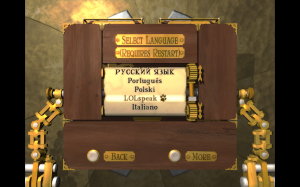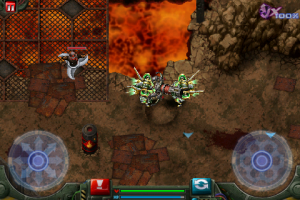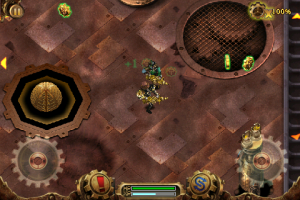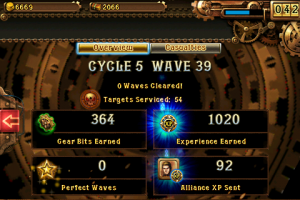Introduction
The field now known as game studies gradually formed around individuals writing about digital video games. These individuals, some writing since the 1990s, came together with the creation of journals (Game Studies in 2001; Games and Culture in 2006), edited volumes (Cassell and Jenkins 1998; Wolf and Perron 2003; Wardrip-Fruin and Harrigan 2004), and organizations with conferences (DiGRA in 2003; FDG in 2009). To create a history, the field pulled certain writings on digital software from the 1990s, a host of Internet and computer culture works from the 1970s to 1990s, select portions of the study of play and leisure, and the history of material video games (1950s-present) and board games (~3000BC-present). As a formation consisting of individuals from different disciplinary backgrounds, game studies is interdisciplinary. This paper questions the extent of that interdisciplinarity by looking at how the current moment of game studies is still tied to disciplinary subfields.
In an introductory article to their edited issue of the journal Games and Culture, Thomas Malaby and Timothy Burke (2009) argue that game studies is at a crossroads; it has been interdisciplinary, but is also at the cusp of a cementation and sedimentation into a discipline. The field is full of voices from different disciplinary backgrounds, but the conversations move forward due to a mutual understanding of the game artifact. This mutual understanding coming from different backgrounds is the main reason that it claims interdisciplinarity. And yet, Malaby and Burke write both that certain groups within the field have already sought to lay down disciplinary borders and fences, and that the creation of stable disciplines is historically normal and professionally safe. Other fields have sought (or fought about) the disciplinary route (Communication among them), and younger academics tend to seek some sort of disciplinary home for career safety. In contrast to this drive toward disciplinarity, Malaby and Burke highlight the maintained interdisciplinarity of the authors within their edited journal issue. However, their excitement about their the various methods they consider legitimate for the study of virtual worlds misses the very disciplinary outlook of the other subfields within game studies, and the lack of discussion between the subfields. Where they see interdisciplinarity, I see enclaves of disciplinarity.
As I see them, these enclaves of disciplinarity exist as topics of research. Ontological studies of play through philosophy, where play is linked to biologically universal theories of development, and universality through studies of games as code; art, rhetoric, persuasion and the question of what games are and what they do through art history, design, and critical studies of communication; media effects such as violence and addiction through psychology, cognitive science and traditional communications; gaming cultures, virtual worlds and the collapse of real and virtual boundaries through anthropology, economics, and sociology; political and cultural issues as translated between real and virtual worlds through cultural studies and critical studies of communication. Each topical enclave is dominated by disciplinary methods; each tends to signal the importance a particular moment of the life of games over the other moments; and each has a different focus. The different foci form the subsections of this paper: what games are, what games do, what games do to players, what we do in games, and how games and the world interact.
In this paper I will outline game studies as it is now, how these enclaves stem from certain disciplinary origins, and how there are built-in universalities that I argue are a problem. However, I also write of how the field might be heading in certain new directions away from reductive universalities. These new directions imply a resurgence of particularity, location and interdisciplinarity, all of which lead to a better understanding of how and why games matter to people and the world.
Ontology – What Games Are
The subfield that makes categorical definitions of play and games is one of the most active and important. Four seminal theorists are Johan Huizinga, a Dutch cultural historian, Roger Caillois, a philosophically and literary oriented sociologist, Brian Sutton Smith, who studies play in a general sense from a more interdisciplinary perspective, and Jesper Juul, who works specifically on digital games. The four span from the early part of the twentieth century to the early part of the twenty-first century and show a general movement in how the theory has changed over the duration of the formal study of games.
Writing Homo Ludens in the late 1930s as the world once more approached war, Johan Huizinga attempted to see just “how far culture itself bears the character of play” (Huizinga 1955, ix). Not simply innocent or educative, play is a key element of culture that changes depending on the situation, but is always tied to competition and even war. While Huizinga’s link between play and the ‘natural’ progression of civilization is problematic, his overall claim for the rules of play are often a starting point for later conceptualizations of both play and games. According to Huizinga:
play is a voluntary activity or occupation executed within certain fixed limits of time and place, according to rules freely accepted but absolutely binding, having its aim in itself and accompanied by a feeling of tension, joy and the consciousness that it is “different†from “ordinary life.†(Huizinga 1955, 28)
Game studies takes two important points from Huizinga’s definition: play as free, and the magic circle.
The first is that play is free, but this is not in opposition to payment and work. Seriousness, which Huizinga links in a limited sense to ‘work,’ “seeks to exclude play, whereas play can very well include seriousness†(Huizinga 1955, 45). For Huizinga, “Play is a thing by itself. The play-concept as such is of a higher order than is seriousness†(Huizinga 1955, 45). The second concept taken up by later scholars is Huizinga’s concept of the ‘magic circle,’ the arena in which play takes place. The actions of play take place within the circle, and outside the play cannot exist. It is Roger Caillois who moves the discussion from play to games, and then makes a hard distinction between games and work. Caillois and later theorists harden the line of Huizinga’s magic circle denoting an inside and an out, and through further discussions around the topic we arrive at the current generation’s of scholars’ arguments of playbor (Dyer-Witheford and De Peuter 2009; Dibbell 2006), xreality (Coleman 2011), and the porousness of MMORPGs[1] (Taylor 2006; Boellstorff 2008). This question of what play is, what purpose it serves, how it relates to work, and whether these are all contingent on a particular world system (be it the neoliberal Capitalist model or otherwise) are all questions of increasing importance within a certain subset of game studies.
In the second seminal text of game studies, Man, Play and Games (2001 [1958]) Roger Caillois criticizes Huizinga for focusing particularly on the idea of play as having value, as it led to Huizinga missing alternate forms of play and games. In contrast, Caillois creates a classification of games that, while problematic in how it subsumes certain generic differences under a “fundamental kinship†(Caillois 2001, 13), certainly opens up the discussion to a greater number of types of games. Caillois initially outlines four rubrics, classes or categories (he uses all three terms at points, which indicates certain fluidity of the classificatory system) of play: agon (competition), alea (chance), mimicry (simulation) and ilinx (vertigo). These four classes are then subject to a sliding ratio between paidia (free play) and ludus (codified games). While Caillois’ Structuralist classificatory scheme is an interesting expansion of Huizinga’s initial interest in play, Caillois’ location of mimicry and ilinx with primitive civilizations, agon and alea with advanced civilizations, and certain categories as essential for the development of culture is problematically teleological in the same way as Huizinga decades earlier. He also notes that certain categories have been key toward the development of certain cultures in a partially essentialist mode. Caillois defines play with six qualities: free (voluntary), separate (subscribed in certain space-time limits in a similar magic circle), uncertain (the conclusion is unknown), unproductive (creating neither goods nor wealth), governed by rules (breaking with real life rules), and make-believe (aware of it being not in real life) (Caillois 2001, 10). Key for later game studies scholars are both Caillois’ particular classification scheme, and his general definition of play.
A prolific writer on the concept of play, Brian Sutton-Smith is often invoked as a third seminal author in a genealogy of game ontology. In his book Ambiguity of Play, he understands play as an ambiguous, diverse act depending on the rhetoric being used in the discursive context. In the core of the book that combines decades of previous studies done by the author, Sutton-Smith elaborates that play is discussed in seven types of rhetoric: progress, fate, power, identity, imaginary, self, and frivolity. Some of these categories overlap with some of Caillois’ (power is agon, fate is alea, identity and imaginary contain parts of mimicry, and self is in part linked with ilinx), but progress and frivolity are distinct in their interaction with work and use. In contrast to Huizinga and Caillois, Sutton-Smith does not relegate play to a lack of purpose. Rather, the ambiguity of its purpose is itself a purpose. Sutton-Smith invokes Gregory Bateman’s oft quoted phrase involving play, dogs and nipping when he very early on notes that “Animals at play bite each other playfully knowing that the playful nip connotes a bite, but not what a bite connotes.†Following this, the assumption is that meaning is clear for dogs that the playful act is not the painful act. However, Sutton-Smith points toward the ambiguity of play by invoking performance studies scholar Richard Schechner by saying that “a playful nip is not only not a bite, it is also not not a bite†(Sutton-Smith 1997, 1). Despite it’s playfulness, a nip is still not the act of not nipping. The act, nipping, playing, has ambiguous meaning. Sutton-Smith concludes his meta-analysis of the various overlapping and interconnected rhetorics of play writing, “variability is the key to play, and that structurally, play is characterized by quirkiness, redundancy, and flexibility†(Sutton-Smith 1997, 229). The variability and quirkiness of play are linked to the biological adaptability of human evolution: “play’s variability acts as feedback reinforcement of organismic adaptive variability in the real world†(Sutton-Smith 1997, 230). Unlike the video game industry, where play and games are understood as related solely to entertainment and fun, and their job is to code a fun escape from life’s problems (Koster 2005), Sutton-Smith links play to the world, people and biology. Play is not simply fun; play is not ‘not work;’ play is something with purpose.[2]
As the most recent theorist of play and games, Jesper Juul is also the first generally quoted theorist to come from a purely digital game perspective with a doctorate in video game studies. In contrast to the above theorists, Juul attempts to understand what a video game is, not simply what a game is, and not the nature of play. Despite the different goal, Juul’s contribution similarly begins with a definition of what is and is not a game. He takes the definitions of seven previous theorists (including Huizinga, Caillois, and Sutton-Smith) and distills them into what he considers to be the core features. This meta-definition is his “classic game model,†which includes six features: rules; variable, quantifiable outcome; valorization of outcome; player effort; player attached to outcome; and negotiable consequences:
A game is a rule-based system with a variable and quantifiable outcome, where different outcomes are assigned different values, the player exerts effort in order to influence the outcome, the player feels emotionally attached to the outcome, and the consequences of the activity are negotiable. (Juul 2005, 36)
Juul’s definition clearly indicates how ‘play’ has been translated fully into ‘games’ within much of game studies. Noble war, free-form play, ring-a-ring o’ roses are all excluded from his categorization of games because they fail to include certain of the six key features. Even chance-based gambling, which is an obvious form of Caillois’ alea, is relegated to a borderline game for Juul. However, while even Juul understands the problems of this very tight ‘classic game model,’ in that it ignores certain games and types of play, he ignores that his definition does not allow for the world and context. Juul does not account for Salen and Zimmerman’s (2003) tertiary rubric of game, design and context where context is culture, or Raessens and Goldstein’s (2005) separation that similarly includes context/culture. In Juul’s final analysis “the rest of the world†has almost entirely been removed as an “optional†element (41). That Juul pushes context, culture and the world out of his essential ontology of games is unfortunate, but it is quite common for much of the works in game studies; there is a visible distinction between work in the field that argues to see universalities and essential perspectives on the one hand, and work that looks at particular locations and iterations on the other hand. It is my contention that we need to pay more attention to the latter despite the dominance of the former in the past decade of research.
The main problem with such ontologies of play is that they seek to render play as universal across cultures and locations. While Huizinga has a vaguely located understanding of play in that he is discussing a Western evolutionary theory, Caillois makes a much more structuralist argument that borders on universality across cultural particulars. This difference between located particularity and general universality is reproduced in later theorists, but the ontologies tend toward the side of universality for greater emphasis. There are two anchors of play to universality: the first is between play and biology, and the second is between digital games and software code.
The first anchor of play to universality is biological. Sutton-Smith’s ambiguity is a built in element that should allow a more particular understanding of any type of play, but his conclusion links play to biological evolution and naturalized universality. Sutton-Smith’s rhetoric of play as progress is absolutely essential to many subfields of game studies. The rhetoric of play as progress links play to learning how to do things that will be ‘not play’ later: dolls become babies, play becomes housekeeping, practice fighting becomes real fighting, play becomes work, et cetera. Many media effects studies, which I will discuss below, depend on a universal understanding of play as a biologically universal. The active media approach to media effects believes that technological mediation necessarily affects all (passive) players in the same way. The location of play, the particulars of the players, and the details of the game are all subsumed under a reductive understanding that people play, and are affected by, games in the same way.[3] Play, understood through this rhetoric, is universal; we all develop, we all learn to play in the same progressive way. Therefore there must be a universal meaning of games.
The second anchor between to universality is through the mutable nature of games as coded software.[4] For example, Juul’s idea of rules and code is linked to an understanding of software and the machine as universal. The machine is ordered. This concept comes from two of Lev Manovich’s five principles of new media, modularity and variability.[5] Modularity understands that new media texts, such as games, are comprised of a host of smaller elements. These elements are combined into the larger text, but exist as themselves. This can be easily seen in the way that software is coded: not as a continuous file, but as a file that calls smaller files: subroutines, functions, procedures, or scripts (Manovich 2001, 30-1). Individual modules can be easily replaced, which brings up interesting possibilities with versions, originals and derivatives. Video game localizations serve an interesting example, as the national linguistic assets of a game are modular and can be swapped out for another set of national linguistic assets. The program itself, the game’s essence does not change, so the game is considered the same thing.
The principle of modularity links up with Manovich’s fourth principle, variability, to create what I understand as a mutable universality through digital manipulation. Manovich lists numerous examples of variability, but scalability, which he calls the most basic, is also the most understandable (Manovich 2001, 37-9). A digital image can be seen in all of its pixilated glory at the full resolution, or reduced to lesser resolutions all the way down to a miniature desktop icon. This is enabled by the scalability of the digital image, which comes from a necessity of new media to be variable. Again, in terms of localization, we can see variability in the necessity of using the modularity of digital video games to enable variations of the applications. Modules are replaced to create the idea of a mutable video game. However, key to the difference between old and new media is not that this variability happens, but that “there exists some kernel, some structure, some prototype that remains unchanged throughout the interaction†that can be considered the essence of the new media text (Manovich 2001, 40). While everything else may be manipulated at no loss, the kernel is considered the essential core to the text/game, and universally understood.
In contrast to these overarching, universal conceptualizations of play and games, there exist recent studies that delve into the very spatially located and contextually specific nature of play and games. Three of these are Mary Flanagan’s work on critical play, Thomas Malaby’s study of gambling in Greece and contention that games must not be separated into play, and Alex Galloway’s concept of social realism in games. Each of the following studies problematize a universal understanding of play, and the ontologies discussed above, but they are not a unified front. Malaby does not follow Galloway’s focus on play and action; Flanagan focuses on play and not the video games in Galloway’s work; finally, Flanagan is working on critical design interventions into games, in contrast to Malaby’s anthropological studies of how games change and are changed by groups of people.
As a game designer and theorist, Mary Flanagan looks at located practices of play. As Flanagan notes, “while the phenomenon of play is universal, the experience of play is intrinsically tied to location and culture†(Flanagan 2007, 3). Games are played in particular spatial and cultural contexts, and this cannot be divorced from analysis (or an ontology of play and games). Her work then moves toward how to design games that deal with meaningful social issues (games for particular places; games that deal with issues of particular places). In her book Critical Play: Radical Game Design, Flanagan argues that game design practice must start and end with values and goals. These values must come from social contexts, and the act of playing must support the values the designer sets out to interact with. Flanagan looks at a very wide spectrum of cultural ‘games,’ which she defines incredibly broadly as “situations with guidelines and procedures†(Flanagan 2009, 7). This allows her to consider artwork, playing house, board games, alternate-reality-games, and finally computer based. It is important to note that Flanagan, like Huizinga, Caillois, and Sutton-Smith, but unlike Juul and many of the other people that I will discuss later, does not limit her study to digital games despite that being the focus of parts of the game studies field at present. Additionally, Flanagan’s tight focus that goes from design to situated play leaves little question of the importance of context, but it also means that games for her do not necessarily travel between contexts. Translation involves redesign, which leads to a new game.
In Gaming: Essays on Algorithmic Culture, Alex Galloway defines video games as essentially related to action. “If photographs are images, and films are moving images, then video games are actions. Let this be word one for video game theory†(Galloway 2006, 2). Video games run through actions of a computer, and must be actively played by a user. These two sides can be doubled into diegetic and nondiegetic (acts within and acts outside the game world) to form a four quadrant theory: ‘diegetic machine acts’ such as running background noise at certain points, ‘nondiegetic operator acts’ like configuring options and settings, ‘diegetic operator acts’ of playing the game itself, and ‘nondiegetic machine acts’ such as game over or loading screens. So far, this bears much similarity to the universal ontological definitions above, but in the heart of Galloway’s book is a discussion of social realism in games. In the chapter he moves from the argument of visual representation toward including embodied, ludic action. Opposed to an impossible task of ‘realisticness,’ which is the task of mimetically representing the world visually, Galloway understands realism as a form of social critique that is linked to both form and context.[6] Galloway suggests “there must be… some type of fidelity of context that transliterates itself from the social reality of the gamer, through one’s thumbs, into the game environment and back again. This is what I call the ‘congruence requirement,’ and it is necessary for achieving realism in gaming†(Galloway 2006, 78). His point is brought home when he compares the ‘realism’ of two FPS (first person shooter) games with great ‘realisticness’ and a relative amount of ‘realism:’ America’s Army, created in conjunction with the United States Army, and Special Force, created by the Hezbollah Central Internet Bureau. Galloway argues:
video games absolutely cannot be excised form the social contexts in which they are played. To put it bluntly, a typical American youth playing Special Force is most likely not experiencing realism, whereas realism is indeed possible for a young Palestinian gamer playing Special Force in the occupied territories. (Galloway 2006, 84)
In games, realism is inextricable from action in context. In terms of ontology, no meaningful theory of games can be taken away from this contextual action and experience. Games never simply ‘are’; games are always in context.
Thomas Malaby argues that games should not be understood in relationship to play or rules, but as contingent cultural practices in the process of becoming. He believes the link of games to play is unhelpful, because play is always assumed to be its own activity. In contrast, Malaby’s dissertation research on gambling in a small Greek town leads him to argue that games and life are not separable: games like poker inform real life actions like politics. In a small essay after this research on gambling, Malaby defines a game as a “semibounded and socially legitimate domain of contrived contingency that generates interpretable outcomes†(Malaby 2007, 96). In opposition to Huizinga’s magic circle and Caillois’ typifications, Malaby argues that games are always integrated with life (there is no magic circle), but in contextual ways (the type of game is related to context, not an essence of the game itself). Additionally, in opposition to Juul’s focus on set rules, which Malaby calls a “misplaced formalism†(Malaby 2007, 103), he argues, “games are grounded in (and constituted by) human practice and are therefore always in the process of becoming†(Malaby 2007, 103). Their rules are never set as they depend on context. One major problem with Malaby’s argument is that he is analyzing analog games (gambling) in contrast to Juul’s digital games. While I do not wish to make an argument separating them as essentially different or similar, I do wish to point out that Juul’s set of rules within digital games must be programmed, and are therefore set (formal, universal), even if they are eternally mutable through patching (still universal through a non-particular quality). While there are local rules to analog games (house rules for gambling), there are no local rule sets for digital games (there are no house rules for StarCraft). Despite this discrepancy between formal qualities of analog and digital games, Malaby interjects into game studies discourse a much needed focus on both particularity and process.
Art, Rhetoric and Persuasion – What Games Are to What Games Could Do
A second subfield looks at what games are aesthetically. The next section of this paper traces the games and/as art, and its current trajectory into questions of what games do rhetorically.
In the introduction to their edited volume, Art and Videogames, Andy Clarke and Grethe Mitchell (2007) connect art and games in a series of stages. The first stage involves utilizing, or repurposing game iconography as art. One example is the street artist Invader, who makes tile mosaics in the shape of characters from the classic 1970s arcade game Space Invaders. He places these mosaics around the world and documents them as ‘invasions.’ In major cities within a world of increasing migration, these invasions serve to propagate alternate ideas of citizenship and ‘alien’ movement. However, iconography does not need to be visual. There are many examples of music groups that play covers from video games, and even performances of Uematsu Nobuo’s Final Fantasy music in concert halls could be considered iconographic art.
The second stage involves game art that utilizes the technology of the game system. These are usually internal or external game modifications.[7] Three examples are Brody Condon’s Adam Killer (1999), Anne-Marie Schleiner’s Velvet-Strike (2002), and Cory Arcangel’s Super Mario Clouds (2002). With his Half Life game modification, Adam Killer, Condon plays with the idea of representation, killing and the FPS by putting the player in a room with innumerable, passive, identical characters where the only thing to do is kill them. Schleiner’s Velvet-Strike is a spray paint modification for the popular FPS game that allows the player to tag walls with user generated, anti-war and anti-violence graffiti instead of running around killing other players. Like Adam Killer, Velvet-Strike plays with the FPS genre’s ‘essential’ shooting element. For Super Mario Clouds, Cory Arcangel removed all of the code from the game Super Mario Bros other than the clouds in the background drifting by to the left, so that when played the game of running, jumping, collecting coins and rescuing a princess does not exist. All that remains is the peaceful experience of watching 8bit clouds drift by.
A third type repurposes gameplay as art. This can be seen in machinima that create movies from game play footage, speedruns as perfect playthroughs, and performances within game worlds. Machinima (from Machine Animation) use video from game play, or video using game engines, in order to make movies. Machinima range from the original United Ranger Films’ “Diary of a Camper†(1996) using the Quake engine to create the most basic of narratives, to Jake Hughes’ “Anachronox: the Movie†(2002), which combined the game Anachronox’s (2001) various cutscenes to create a full length movie, to the long running comedy series Red vs. Blue that uses various Halo engines,[8] to fan made music videos such as Oxhorn’s “ROFLMAO!†(which uses the World of Warcraft engine to adapt the skit “Mahna Mahna†from the Muppets Show).[9] Speedruns attempt to link the playing of games to art, so that Andrew Gardikis’ five-minute speedrun of Super Mario Bros. is elevated to artisan or athletic skill.[10] Finally, there are performances within game environments such as Joseph DeLappe’s dead-in-iraq (2006) or his The Salt Satyagraha Online (2008). For dead-in-iraq, which is still in progress, and will continue as long as United States military is still in Iraq, DeLappe logs into America’s Army, finds a quiet corner, and types out the newly released names of the war dead. He does not take part in the simulated violence. Instead, he types and continues to type until he invariably gets booted from the server for not ‘playing’ the game. He then logs onto a different server and continues until he finishes with the newly released names of the dead. For his reenactment of Gandhi’s “Salt March†in Second Life DeLappe rigged-up a treadmill to operate as an input device for the game; when DeLappe walked on the treadmill, his character, MGandhi Chakrabarti, moved in the game. Over twenty-six days in 2008, DeLappe walked 240 miles on the treadmill, thereby covering the same distance Ghandhi walked during his protest of the British salt tax in 1930. In both instances, the game world is the site of an artistic performance, but the game itself is only minimally used.
While the first three types are mainly alterations of games done primarily by artists and coders, the fourth type is moves toward games as art on their own grounds, and mainly produced by or with game designers. Art games follow the rules of games, but distance themselves from ‘normal’ games through self-identification as art. Examples include: Eddo Stern’s Waco Resurrection (2004), which plays with embodiment by putting players into the role of David Koresh at the 1993 Branch Dividian standoff in Waco, Texas; Jason Rohrer’s Passage (2007), which uses simple, 8bit graphics and sounds to play with memory, identity and life as the player moves forward with life, gets married or doesn’t, scores points, or doesn’t, but always dies in the end; and Tale of Tales’ The Path (2009), which plays with gender and the Little Red Riding Hood story to create an experience of introspection instead of action. All three games utilize the game form to enact art; the player’s experience is a central part of the art.
Unfortunately, one of the problems with Clarke and Mitchell’s declaration of ‘art games’ is that it necessitates not art games, and this brings the conversation back to what makes certain games ‘art’ and what makes other games ‘not art.’ Is it a matter of high and low culture, or good and bad art? Is it a matter of subjective judgment or professional training? Roger Ebert’s (2010) gate keeping of modern technology’s interaction with art is one of many places that show this sort of reductive yes/no is not particularly productive. Instead, we might say that the questions “what is art?†and “are video games art?†are themselves bad questions. Art has shifted in cultural status, material form, and actual purpose in different movements, cultures and time periods. Instead, Ian Bogost asks what do art and video games do, and what connecting movements can be seen in games? Bogost understands video games not as “art,†an amorphously defined battleground of different movements (Bogost 2009), but as a “new domain for persuasion… that uses procedural rhetoric, the art of persuasion through rule-based representations and interactions rather than the spoken word, writing, images, or moving pictures (Bogost 2007, ix). “Videogames service representational goals akin to literature, art, and film†(Bogost 2007, 45), but the means of attaining this representational goal cannot be the same as other media. Art for Bogost is tied to various movements, and linked to the gallery and museum; in contrast, video games are tied to their own movements and linked to the arcade and the home. While video games might do similar things as art, they cannot be equated, just compared.
Through Kenneth Burke, Bogost argues that rhetoric is essentially linked to persuasion and meaning: “Wherever there is persuasion… there is rhetoric. And wherever there is ‘meaning,’ there is ‘persuasion’†(Bogost 2007, 21). The particular form this rhetoric takes is procedural, which is to say in and through the game code (Bogost 2007, 14). “Procedural rhetoric is a technique for making arguments with computational systems and for unpacking computational arguments others have created†(Bogost 2007, 3). Bogost initially uses Molleindustria’s The McDonald’s Videogame (2006) as an example of procedural rhetoric at work. As a simulation of a fast food company, the player controls four areas: farmland, slaughterhouse, restaurant, and corporate headquarters. In order to win, the player must understand how to make money where the only way to succeed is to cut corners in terms of environmental and health-related issues such as cutting down rainforests, feeding the cows contaminated beef, bribing politicians, and of course using various forms of advertising and propaganda. The game persuades the player, through gameplay, that the only way for this type of business to succeed is by making unethical choices, and the player succeeds by playing in such an unethical manner. The game’s meaning then, is that fast food companies are bad. However, Bogost is clear that The Grocery Game, a website for saving money through coupons and stockpiling, uses procedural rhetoric equally well. The code finds the best deals, tells the user what coupons to use, what items to stockpile, and through following this logic the user saves money (Bogost 2007, 37-9).
Part of Bogost’s desire to understand how procedural rhetoric works is to make better games himself. His Cow Clicker (2010) game for Facebook is an attempt to mix irony and annoyance at the current breed of click games that place a façade of content over simplistic, repetitive, meaningless, but seemingly rewarded clicking. Cow Clicker allows you to click your cow once every six hours, spend ‘mooney’ (the in-game currency, which can be bought with real money) to buy different cows, and complete for numbers of clicks with friends and strangers. Ironically, the game was a hit despite its attempt at sarcasm. Bogost’s Guru Meditation (2009) iPhone game (it also has a version on the Atari VCS using the Joyboard) similarly uses procedural rhetoric to argue about the meaning of action. The goal of the game is to keep the iPhone as steady as possible so that the built in accelerometer registers as little movement as possible. Only by keeping the mobile phone immobile can the player succeed in the game. To play the game the player cannot do all of the required things of life such as walking to work, taking the bus, or moving in any way: the act of playing the game opposes being active within culture.
The other part of Bogost’s goal is to understand how others make games, which is to say, how to analyze the meaning of a game. This is particularly important in terms of cultural and political discourse, but also in its relationship to art.
September 12th: A Toy World (2003) is a game by Gonzala Frasca that makes claims about America’s strategies in its never-ending “war on terror.†The player sees an isometric ‘middle eastern’ village with many ‘citizens’ and a few ‘terrorists.’ The player has a targeting reticule that is aimed through mouse movement. Upon clicking the mouse, a missile is launched; it reaches its destination after a few moments. The missile may hit the target, may kill the ‘terrorist,’ may destroy nearby buildings, and/or may kill ‘civilians.’ In any case, the result is that nearby ‘civilians’ gather around the destruction, mourn, and become ‘terrorists’ themselves. Like with the 1998 film WarGames, where an AI learns that in nuclear war “the only winning move is not to play,†September 12th uses procedural rhetoric to persuade the player that, like tic-tac-toe and thermonuclear war, the only way to win the war on terror is not to play. Of note is that this rhetoric is not simply in games that wear their ideological stripes on their titles; it is also in games that hide their meaning.
Brenda Braithwaite has recently switched from making digital games professionally to creating a series of award winning board games called “Mechanics is the Message.†The game in the series that has garnered the most attention is called Train. In it, the player tries to get people to a terminus. There is rolling of die, blocking of other players’ trains, and the usual board game fun. However, when the first player gets his or her first train to the terminus, its name is revealed to be Auschwitz. At this point various details of the game come into a new light, but the game itself does not stop. Rather, the player is asked to get more passengers, to continue the ‘game.’ Whether the game actually continues or not is up to the players themselves, just as was the practice of many things within twentieth century Europe, including the extermination camps. The mechanics of a game persuade the player of a message and in the case of Train, the persuasion has been incredibly powerful. Many people do not want to continue and are appalled by their previous excitement; some people try to ‘save’ the passengers through creative play (Brophy-Warren 2009). In a Brainy Gamer podcast appearance on the topic of games and art, Art Historian John Sharp indicates that Train is art because its mechanics allow a complex emotional experience (Abbot 2009). Whereas Sharp understands post-Renaissance art and culture of the past 500 years to be dominated by the visual, games are a key element of the current change in world culture. The so-called “Ludic Age†is dominated by systems and action, and Sharp sees games as a way to interact with these systems. The way that a user enters the aesthetic experience of understanding the system at work is through playing the game, but when a game is in a museum as art it is unplayable and untouchable. Thus, games are contextually at odds with our current view of art.[11] To Sharp, it is only through playing games that we attain something that is similar, or could be similar, to art. Unfortunately, the ability to see games as things of artistic expression is hindered by the discursive understanding of games as fun, or a waste of time; by people refusing the possibility of games as art; by the place in which people play games: entertainment rooms, lounges and bedrooms instead of museums, galleries, or even places of worship.
If we put Sharp and Bogost together we might claim that certain games are now able to approach the claim of being ‘art’ because they successfully mount claims and are able to persuade their players of these claims. While procedural rhetoric is how games work, not all games are effectively persuasive. Similarly, not all ‘art’ is ‘good art.’ However, persuasion through rhetoric is something games can do to provide a parallel modality to the expressive rhetoric of art.[12] Quake is not particularly artistic or rhetorical, despite its importance historically as the first polygon based FPS game, and first engine to encourage machinima. In contrast, The McDonald’s Videogame, Train, and September 12th all mount arguments and could be claimed to be ludically aesthetic. One might further claim that America’s Army is just as rhetorically successful, if not more successful, due to its overarching integration into American culture. Such a claim is problematic because of the question where art, aesthetics and persuasion end and where propaganda begins, but such is a key place of research in game studies due to the long relationship between games and commercial industry.[13] I will return to the discussion in the closing section of this paper with discussions of what we do with games, but now I turn to questions of what games do to us by turning to the subfield of video game effects.
Media Effects – What Games Do to Players
Another large subfield of game studies is media effects research designed to understand the way that video games affect players. This subfield should be meaningful and important, as it seeks to understand the physical, mental and social ways that video games act on players, but it is problematic due to methodological issues and the baggage it carries from past incarnations involving previous media. I include the subfield while pointing out the numerous problems within it, some of which are ignored by the practitioners. I will focus on two research areas, violence and addiction.[14]
While the question of effects is broad, and in certain ways goes back to Plato’s fears that the written word would destroy peoples’ ability to remember (Phaedrus), it has taken 20th century form in the fears of how film and television effect their viewers, and 21st century form in similar fears regarding video games.[15] Examples of 20th century fears include the Payne Fund studies around 1930 that sought to link movie viewing and youth delinquency, and studies in the 1960s and 1970s that tried to link a rise of documented violence in America to television viewing. Screen and violence studies have continued into the present, particularly in relationship to children. A recent example compared kindergartener aggression levels after watching the television shows Mighty Morphin Power Rangers (a martial arts action show about ‘good’ and ‘evil’) and Barney (about a singing, purple dinosaur) (Singer and Singer 2005). The studies claim that watching violent television makes children violent. However, the extent and duration of the effect is completely unproven. In part because of decades of an inability to prove a causal relationship between screen viewing and violence, and in part because of the belief that ‘actively’ playing games might be different than ‘passively’ watching television, media effects research has moved into the realm of video game research.
The problem with video game effects research is the problem with traditional media effects research. It starts from the assumption that all people are equally affected through playing. It ignores the context of play, and any particulars of the players. Despite the claims that because players are active in their playing, thus more inclined to be effected by video games, video game “effects†research still work from an ‘active media’ perspective. Active media research assumes a passive user, who is affected by the medium in a universal way. Research methods tend to be quantitative, and are designed to find a statistical correlation between playing games and an effect. While there is some ‘active user’ research being conducted to understand the practices of interacting with media from an active perspective, such studies are in part meant as countermeasures to the effects research area itself.
In part because they have no voice to say one way or another, in part because of modern beliefs in what it means to be a child (Buckingham 2000), and in part because moral panic is easily mobilized in order to protect them, children are a primary population studied in relation to media effects. Are children becoming violent by playing games (Anderson)? Are they being indoctrinated into the military through playing propagandistic first person shooters, or murder simulators (per the disbarred lawyer Jack Thompson)? Are they becoming addicted to games (Chou and Ting 2003)? Are they becoming obese through playing games (Stettler et al. 2004)? There’s even the rare positive effect such as whether children have better visuospatial cognition [ability to understand spaces through vision] through playing first person games (Spence and Feng 2010)? A second common subject population is the military in the context of training, especially for understanding how youth might be indoctrinated into the military through certain games such as America’s Army in the United States.[16] However, because children are biologically adapting (as is understood through the very culturally based concept of childhood), and moral panic is easily mobilized around them, the focus tends to be on children instead of the military, or when children turn into the military. The correlation between effects research and children is particularly visible in the studies done on games and violence.
Using a General Affective Aggression Model [GAM], Craig Anderson and Karen Dill study the link between playing games, entering a generally more aroused state, and being primed for aggressive actions (Anderson and Dill 2000). In an initial questionnaire they found a correlation between violent video games and aggressive personality, and between playing violent video games and having a delinquent personality. A laboratory study further correlated playing violent video games with a desire to harm somebody else (represented by holding down a buzzer longer). Finally, in his meta-analysis a year later with Brad Bushman, Anderson argues:
results clearly support the hypothesis that exposure to violent video games poses a public-health threat to children and youths, including college-age individuals. Exposure is positively associated with heightened levels of aggression in young adults and children, in experimental and nonexperimental designs, and in males and females… In brief, every theoretical prediction derived from prior research and from GAM was supported by the meta-analysis of currently available research on violent video games. (Anderson and Bushman 2001)
Anderson is the main voice in the active media side of video games research that tries to show a causal relationship between playing video games and violence, which the above research and quote clearly indicate are a foregone conclusion.
Anderson’s work is extensive and forcefully written, but has been shown by numerous researchers to be biased, and to stem from faulty research. Opposing studies have shown that longer exposure to violent games correlates to reduced aggression (Sherry 2001, 425), and that the correlation between violence and video games disappears when gender is controlled for (Ferguson 2008; Gentile et al. 2004). Additionally, Anderson and Dill’s study was attacked as they ignore three out of four violence indications, all of which do not point to heightened aggression (Ferguson 2008, 6). In general, the various studies have been criticized because the authors have played up an incredibly weak correlation between violence and games and calling it a causal relationship. Finally, it is telling that Anderson, Douglas Gentile, and Katherine Buckley announce that, “the scientific debate about whether exposure to media violence causes increases in aggressive behavior is over… and should have been over 30 years ago†(Anderson et al. 2007, 4), but they do so through referencing none of the oppositional studies. While one side of the active media research ignores alternate studies in order to produce damning correlation (that they claim is a cause and effect relationship) between playing violent video games and violence, the other side points out the problems of the research, and the weak correlation, or even the lack of correlation, between games and violence (Egenfeldt-Nielson et al 2008; Ferguson 2010; Gauntlett 2005).
Media effects research is tied to what Christopher Ferguson calls the “Moral Panic Wheel†(Ferguson 2008).[17] The wheel turns as follows: (1) Most of the impetus for effects research begins with general societal beliefs that may be informed by cultural, religious, political, scientific or activist elements. (2) These general societal beliefs lead to media reports on potential adversarial effects. (3) The possibility for violence turns into a likelihood or certainty of violence, which is implied in the broadcasts of the mass media. (4) This dissemination of false information results in a call for research in order to support the original beliefs. (5) The research promotes fear, and is uncritically supported by the media that called for it in the first place. (6) Politicians then promote the panic and fear in order to promote their own political careers, which loops back around to more media reports on potential fears. Through this cycle parental and mass media reactionary responses get coupled with advocacy groups and easily funded scientific research, resulting in a majority of scientific publications indicating some sort of correlation. In contrast, because of the publication bias toward reporting positive effects, null effects go unpublished and therefore uncited (Ferguson 2010, 6-7).
In the recently released and relatively well publicized general audience nonfiction book Grand Theft Childhood, Lawrence Kutner and Cheryl Olson argue that there is a correlation between violence and playing games, but it is insubstantially determined at present, and far from the sole cause of violence. The authors argue that it would be far more productive to locate the other reasons for violent actions outside of media, and that it is not incidents of extreme violence that have increased (they have decreased), but bullying. However, what is most interesting about Kutner and Olson’s book is its popular orientation. Their book is published through a popular press, and targeted not at academic or scientific audiences, but the same audience that is otherwise subject to the wheel of media panic. The book’s second chapter is a cultural history of media panics over the past century in the United States. By showing the link between the current panic and previous ones, they highlight the parallels between what was being hidden and focused upon then, and what is being hidden and focused upon now. Their book thus works to contrast efforts of game naysayers, media voices, and politicians in ways that the academic oppositional studies and meta-analyses have simply failed at so far. Essentially, Kutner and Olson work within Ferguson/Gauntlett’s Moral Panic Wheel to slow it down.
While violence has been the most visible topic of video game effects research, it is not the only one. A second controversial effect is addiction. The question whether games are addicting, whether this addiction (if it is indeed an addiction) needs to be regulated, and for whom does it need to be regulated are all elements of this branch of effects research.
Like the research on violence, addiction research stems (at least in part) from media panics. The suicide of Shawn Woolley while playing Everquest in 2002; the 2004 suicide of Xiao Yi with accompanying note that discusses his addiction and desire to be reunited with other players (Guttridge 2005); the 28 year old South Korean gamer who collapsed after a 50 hour session in 2005 (BBC News 2005); and the 2010 starvation of a South Korean couple’s real life baby supposedly caused by the parents’ game addiction (Tran 2010). All of these incidents have been highly represented in the mass media (Reverend_Danger 2009), and following Ferguson and Gauntlett’s concept of moral panic, studies have begun to research addiction, but are inconclusive as yet. While the American Psychiatric Association (APA) has discussed the possibility of listing video game addiction as an official addiction, it has not yet done so for a number of reasons (ScienceDaily 2007; Hartney 2011). One of the main conundrums around the addiction issue involves the difference in bodily reaction for becoming addicted to games as opposed to drinking or gambling. While the societal reaction toward ‘game addiction’ is similar to that of ‘drug addiction’ (withdrawal form society and an inability to act ‘normally’), the physical manifestation of addiction is quite different in terms of dependence, withdrawal and relapse. For the APA these are serious differences, and part of the reason that game addiction is not considered an official addiction.
A second difference involves the relationship between games, addiction and design practices. If gamers are becoming addicted to playing, this is in part because of particular game design that draws the players in and encourages them to keep playing. If this is the case, then it is not games that are addicting, but particular design practices. In a 2003 study on game addiction, Ting-Jui Chou and Chih-Chen Ting argue that ‘flow experience’ might be a causal link between playing as habit and playing as addiction. The concept of “flow†comes from Mihaly Csikszentmihalyi’s (1990) study on optimal experience, or the rare, intense, but happy and pleasurable moments where the body and mind are completely consumed in something. Chou and Ting note that Becker and Murphy’s economic theory of ‘rational’ addiction, as a type of logical habit, is at odds with the psychological or sociological theory that understands addiction as abnormal excess. However, it is within the playing as habit that Csikszentmihalyi’s (1990) flow state is more likely to occur for players, thus pushing them over into the “quasi-lunatic†type of addiction (Chou and Ting 674). While the habit style of rational addiction is good for business, an enjoyable experience, and good game design, too much of it might generally push players over into the more dangerous area of addiction.
Despite this close link between flow and addiction, many games are designed with a type of flow experience in mind. The most obvious example (and the usual scapegoats) are MMOs like World of Warcraft, which require the player grind for hours in order to increase his or her level, or to gain higher levels of gear. However, clearer and more self-aware examples are Jenova Chen’s games flOw and Flower, which follow through from his MFA thesis on “Flow in Games†(2006). Chen sought to adapt Csikszentmihalyi’s flow experience into a workable theory of game design. Chen designs to allow the user to play in the ‘zone of flow,’ which exists between challenge and boredom depending on personal skill. The user is never at a loss for what to do, and never in a state that would cause him or her to stop playing from vexation. Flow in these games is about designing for user enjoyment, not long lasting play through repeated quests.
The other confusing element involving addiction and MMOs is why the players continue playing. Do people play MMOs due to a simple, unhealthy addiction, incredibly good game design, or because interaction with an alternate, online culture is different and/or better than the offline culture for one reason or another? Unlike the biologically oriented effects research, certain studies on addiction seek to understand societal reasons that people run to games.
Economist and theorist of virtual worlds, Edward Castronova, has used the economic “utility function†to understand the playing of MMOs, and to explain what he foresees as a mass migration from real to virtual world (Castronova 2007, 65-70). According to economics, the rational action is the one that produces the most value; people are rational; people do the rational thing that leads to the most value. Thus, MMOs must have some sort of value that is causing people to rationally play to the point of addiction. While Castronova agrees that there is value that these people seek in the game (freedom, fun, and an interesting experience), part of their decision to flee to the virtual worlds resides in the problems of the real world. These problems are lack of equality in employment, access, outcomes, wealth, et cetera. Addiction, then, is a silly concept as of course people are addicted to something that is fun and good. For Castronova, the answer is simply in changing the real world to take advantage of the utopian, virtual world benefits. He predicts that the exodus to virtual worlds that stems from problems in the real world will eventually reverberate by people changing the real world. Whether this is through making the real world game-like, or changing the bad parts of the real world is as yet unknown.
Flowing directly from the studies of addiction and MMOs are more general studies of virtual worlds. The following section is about gaming cultures studied primarily from an anthropological perspective.
Gaming Cultures – What We Do In Games
One of the first discussions of gaming cultures is Julian Dibbell’s 1993 Village Voice article, “A Rape in Cyberspace,†which is about how rape can exist in a virtual form, how a digital place can be social, and how emotions and affect work between real and virtual environments. Dibbell’s article describes a series of events in the online multi-user domain LamdaMOO, which began with a virtual ‘rape,’ followed with a general meeting and user encouraged ‘execution’ (a ‘toading’ that corresponded to the erasure of a character), continued with a ‘resurrection’ (a new character with similar actions), and ended with a character eternally ‘sleeping’ (offline, and away from game). The two key points of “A Rape in Cyberspace†are the emotional reaction to the rape, and the social formation surrounding the decision to toad the rapist. The emotional reaction to the virtual rape is important because it indicated the porousness of virtual/actual borders emotionally. Despite its virtuality, the rape was real. It had real effects on both the virtual avatars and on their actual players. The second key point was the social formation that mimicked real culture. MUDs were of course social situations, but the virtual execution of the rapist took place not by a developer’s authoritarian decision, but deep deliberation of a created social group. This type of cultural formation, deliberation, and action is surprising precisely because it is the exact same thing that happens in the actual world. The same thing that happens in the real world happens in virtual worlds. The magic circle is no longer a hard line between play and life (if it ever was), but a porous boundary between alternate places. These two points have been reiterated in much of the later work on gaming cultures: the things that happen in games matter; there is no hard line between online, virtual game and offline, actual life, and cultures are developed between the two worlds.
A later, and much quoted study in and of a modern MMORPG is T.L. Taylor’s Play Between Worlds (2006).[18] In her ethnographic research of then dominant MMORPG Everquest, she makes strong conclusions aligned with Dibbell’s decade earlier statements, against the hard boundaries of Huizinga’s magic circle, and for the sociality of games. Opposed to the ‘common sense’ belief that video games are antisocial, solitary endeavors and that video game players are loners, Taylor’s study crosses between the virtual and real world, showing how communities were built between the two worlds. Unlike the belief that the game was a place apart, an encircled, magic world of play, she writes of many real things that happened online; and conversely, that virtual things that happened in the game had an affect on the real lives of the players. Taylor concludes, “to imagine we can segregate these things—game and nongame, social and game, on- and offline, virtual and real—not only misunderstands our relationship with technology, but our relationship with culture… [Her] call then is for nondichotomous models†(Taylor 2006, 153). By nondichotomous she means models that do not push one theory or another, real or virtual, game or not game, play or work, as these either or situations falsely simplify the way we as humans interact. While Taylor does not directly reference Sutton-Smith’s ideas of the ambiguity of play here, she is in ways extending this ambiguity to the entire register of game interactions.
Taylor’s study and conclusions support many of the other research agendas from the argument that games affect gamers (discussed above), to the methodological expansion of the ethnographic method to alternate sites (Marcus 1998), to the fact that these synthetic worlds matter socially and economically (Castronova 2005; Dibbell 2006). Within game studies, Taylor’s study is indicative of a massive widening of research to a new area of game cultures and gamer cultures: studies of the social cultures of gamers in and out of the games. These have included studies of clans in MMOs (Pearce and Artemesia 2009, Nardi and Harris 2006), children and learning (Nardi et al. 2007), and even case modification culture (Simon 2007).
A similar, almost derivative work is Tom Boellstorff’s Coming of Age in Second Life (2008). Boellstorff’s ethnography of the MMO world Second Life is a detailed sketch of the culture. He reiterates some of the claims Dibbell made 15 years earlier involving the creation of social groups, and he follows Taylor by pointing toward alternate ethnographic field sites. However, key problems with Coming of Age in Second Life are the complete disregard of any element of the MMO as related to game, and that for him Second Life is a self contained culture. Regarding Second Life as a world, but not even world as he reiterates its titular claim of a ‘life,’ Boellstorff pushes away from the play or gameness of the application. Second Life is a place where life happens (Boellstorff 2008, 91). This claim is not wrong, as that is how players use the application. However, it is problematic as the application is fighting for market share with World of Warcraft, Everquest, Ultima Online and all of the other MMO games. While Second Life is not a game, it is still fighting against other games as an alternative, and as such should be considered as an industry and cultural comparative artifact. However, because of Boellstorff’s focus on the self-contained culture he ignores the industrial, cultural and real world particulars of how Second Life functions. Essentially, Boellstorff creates a magic circle of cultural containment around Second Life players. There are those who play it, and they are in one culture even if their culture goes between their two worlds of real and virtual.
Mia Consalvo’s work on cheating (2007) is a second way to study gaming culture. Consalvo focuses on the very particular, and yet very different ways that one may cheat within games. Unlike Boellstorff’s overly focused online study, Consalvo looks at the multiple places within the register of production and consumption that one might cheat. She spans from programming easter eggs to cheat the producer or distributer, and the creation of strategy guides by the industry or by the community, to cheating within gameplay through codes or hacking, and even to the effort to police cheating in order to create a fair system. As somebody who understands the range of ways digital gaming happens, Consalvo study explores the culture of game cheating in a much less reductive way than Boellstorff’s study of Second Life culture. Her study spans from top-down industry, to resistant fan practices, to mainstream player practices that are both allowed and illegal depending on the game. However, there is a familiar problem in her work: she fails to relate or explore the culture of cheating within different national and regional cultures. Consalvo presents cheating as universal.
Consalvo’s main focus of study (Final Fantasy XI) exists in Japanese, United States and European locales, but she ignores the differences beyond brief mention. For Consalvo, too, gaming culture exists apart from real world cultural matrices, which are somehow assumed to be equally self-contained. In contrast, I would argue that located (often nationally) cultural understandings of cheating are essential to understand the notion of cheating in games. The status of hacking, FAQ writing, and gold farming (all forms of cheating discussed by Consalvo), changes depending on the perspective of the subjects involved. To those who buy gold it is because they do not have enough time and the game to be a matter of fun and play value. In contrast, those who oppose the culture of farming and buying gold often consider it cheating as it ruins their way of playing. While these are conclusions that Consalvo derives, she fails to consider the plethora of freemium games—free to play, but micro-payments for add-ons—that are currently thriving. Originally prevalent with MMOs in Korea and China, the freemium model opposed more Western dominant monthly payment styles that support Consalvo’s conclusions about ‘fairness’ and ‘cheating.’ The freemium model is almost identical to gold farming, except it is the developers and producers who are ‘ruining’ the game by ‘cheating.’ Is gold farming as cheating somehow integrated into national or regional understandings of cheating? Even though she deals with gold farming, Consalvo fails to look at the different models, or situated understandings of cheating. She sees a universal gaming culture and corresponding understanding of cheating instead of understandings that are integrated into regional and national based cultural understandings.
While studies of game cultures and gamer cultures break with earlier separations of real and virtual, they also assume an essentialized alternate culture that somehow remains unlinked to cultures that players might otherwise be a part of (such as national, racial, or religious cultures). While these studies have facilitated the logical break of games as separate and pure fun, they have reinforced the ontological universality of games. In the next section I discuss the way that a different subfield of game studies deals with cultural and political issues between real world and games. In a way, these last two subfields overlap, and it is only the researchers’ agendas and methodologies that determine the placement in one or the other. If walls and fences separate the other disciplinary enclaves, these two are separated by train tracks. One is a bit more run-down, a bit dirtier, and a bit more tangled; however, my alliance is with the dirtier enclave in the next section, which more critically goes back and forth between real and virtual worlds studying their tangled interactions.
Political and Cultural Issues – How Games and the World Interact
The final area that I will discuss here involves the intersection of (supposedly) contained games with (supposedly) external variables, issues and problems in the world. Like with the anthropological studies of game cultures, these cross Huizinga’s magic circle, but these final studies work toward how games problematically reproduce, reiterate and facilitate real world issues. In this final subfield of game studies are issues of empire, economics, race, gender, and my own focus, translation. While this subfield holds promise for future study from a Communication perspective, the studies as they stand are relatively limited at present. This looseness is in part because different authors do not necessarily draw from each other, or from the core of game studies. Rather, they often draw from other interdisciplinary origins and discussions. However, if conversations continue to happen, this subfield could turn into a very powerful and productive area in contrast to the bickering of other areas where either or arguments tend to dominate.
In their 2003 book Digital Play, authors Stephen Kline, Nick Dyer-Witheford, and Greig De Peuter provide a more “multidimensional approach†to studying games that mixes media studies, political economy, and cultural studies perspectives. From studies of media the authors draw from Harold Innis’ analysis of the printing press and technology’s relationship to bias, empire and knowledge, and Marshall McLuhan’s extension of Innis’ theories toward electronic media. From political economy, the authors create a genealogy from Karl Marx’s critique of Capitalist accumulation, through the Frankfurt School’s critique of mass culture, to Herbert Schiller’s link of capitalism and communication technologies to American Empire. However, they focus on Nicholas Garnham’s “circuit of capital†where both selling and advertising feed off of each other (Kline et al. 2003, 39-49). Using cultural studies approaches, the authors problematize the top down reductive, top down understanding of the political economic approach that does not consider agency or the user. This they pull from Stuart Hall’s call for both encoding and decoding of messages, and reception studies’ focus on the viewer/user. However, they also critique cultural studies for how it ignores embodied play, underplays the commercial structure of the industry, and misses the fact that audiences do not simply exist, but rather, are constructed in the commercial marketplace (Kline et al. 2003, 45-6). Finally, the authors get inspiration from Raymond Williams complex understanding of television as a continuously shaped and shaping technology that was far from inevitable or predetermined (as media determinists would hold). Through Williams, and more directly Garnham’s “circuit of capital,†the authors combine the three disparate approaches through with their Three Circuit model of interactivity (Kline et al. 2003, 58). The three approaches form separate circuits of technology, marketing, and culture respectively. The center where they overlap is the realm of games, and as the circuits are constantly working, the approach integrates a non-universal, non-cemented view of games that incorporates time and change. While their approach has much promise, primarily due to the complexity, it has been little used. In part this is due to the very complexity that they espouse, but in part it is due to their avoidance of the seminal figures of game studies and the digital/coded aspect. While they discuss the designers and programmers, they do so from a historical approach that avoids the more technical aspects of computer games as code. The unfortunate result is that they do not speak to the more technical areas of game studies, which are dominant at present, and those technical areas do not pull from Kline et al.’s complex, interdisciplinary approach. This is further visible in that Dyer-Witheford and De Peuter have co-written a second book on Games of Empire (2009), which goes similarly unmentioned in most of the other literature in game studies. While cited in bibliographies, the two books are little discussed in other studies, and their overarching method is so far not often followed. This lack of crossover has little to do with the usefulness of their work and all to do with the disciplinary and methodological biases of the individual people in the field.
There are two places where Kline et al.’s interdisciplinary methodological intervention can be seen to be bearing fruit so far. The first is in Aphra Kerr’s (2006) recent textbook-like overview of games. In The Business and Culture of Digital Games: Gamework/Gameplay, Kerr argues, “that digital games are socially constructed artefacts that emerge from a complex process of negotiation between various human and non-human actors within the context of a particular historic formation†(Kerr 2006, 4). Therefore, it is necessary to study the span of contexts, actors and artifact in all of their manifestations: these moments include studying the game as text to be played, the industry as an object, the global networks of production that make games, players in their context and how they particularize play, which includes counter gaming strategies. Unfortunately, her study is a broad overview aimed at introductory students in game studies, which does not follow any particular game through these different moments. As a result, the interdisciplinary methodology remains an ideal or goal.
A second connection is Matthew Payne’s yet-to-be-finished dissertation work, where he follows Kline et al.’s circuits of capital methodology to study FPS games.[19] Payne argues that FPS games represent a new form of Ludic Capitalism.[20] The connection between world and game, Capitalism and commodity, is key to critical communication studies of games and is one of the key benefits of this area of research. Payne’s extension from these larger connections to a particular genre is a second important point. By focusing on a genre, Payne is (likely) able to get closer to making particular arguments that games in general (through the studies of Kline et al. and Kerr) do not approach. Unfortunately, other than Kerr and Payne few studies so far take up the challenge of moving between the various fields within game studies. As it stands, despite its claims toward interdisciplinarity game studies is still focused on separate areas, or to continue with Kline et al.’s terminology, separate circuits.
Connected to both Kline et al’s discussion of culture and circuits, and Kerr’s analysis of business economics, is a subset of research on game economies. Most striking are Edward Castronova’s early study of Everquest’s GDP, Julian Dibbell’s effort to make a living buying and selling in Ultima Online, and Ge Jin’s documentary work on Chinese gold farmers.
The first of these three examples is Castronova’s study of the economy of Norrath, the world in which MMORPG Everquest takes place. In his study, Castronova calculates that “the gross national product of Norrath [is] about $135 million… [making Norrath] the 77th richest country in the world, roughly equal to Russia†(Castronova 2001, 33). While the per capita income is above the poverty line, “inequality is significant†both between levels (as designed) and within equal-level characters (signaling poverty where there ought to be equality) (Castronova 2001, 33). Castronova’s study was groundbreaking as it showed a system of value within Everquest’s diegetic world (and by extension in any MMO), but it was also ground breaking for showing that economies of game worlds are tied to national economies. There is no magic circle to separate work and play, real and virtual lives; rather, they are completely tangled together.
Two years after Castronova’s study, Julian Dibbell published an article (2003) about the sale of real estate in MMORPG Ultima Online, and a year after that Dibbell conducted a yearlong attempt to make his primary source of income the buying and selling of goods in Ultima Online, which he documented in a blog and later compiled in a book. In Play Money (2006) he documents the banal process of the various ways he learned to buy and sell in Ultima Online from farming and selling, to buying and selling items, to simply buying and selling gold. Dibbell’s analysis is interesting in that he proves he can make a reasonable living. However, it shows dystopian sides, as he does not make as much as he did as a writer, which is not the highest paid job regardless, and because of the exploitation at “gold farms†in Tijuana, Mexico (Dibbell 2006, 9-29; 88-134). While Dibbell works independently as a buyer and seller, the Tijuana gold farm (which the author hears about, but does not see) is a place of unskilled, exploited labor. Gold farms are a place of incredible importance for the back and forth between world and game; the issues of exploited labor, gold farming, and racism have gotten more important as such gold farms have become more common in places with available and exploitable labor.
A third influential work is Ge Jin’s documentary work on Chinese gold farms (2006, 2007). He has studied the living, working and discursive conditions of gold farmers in and around MMOs. While some MMO players are against gold farmers who make in-game currency in order to sell it for real world currency, other MMO players claim gold farmers are simply supplying a demand. Regardless of the official status of their act,[21] gold farmers’ conditions bring up critical issues regarding work and play in rich and poor environments, and the visible material connections between virtual and actual worlds. Castronova puts in-game economic disparity as an afterthought at the very end of his early work (2001), but five years later it has become a crucial area of study. While the economics of online worlds is acknowledged, it remains a highly contentious area of game culture: Who is right and who is wrong? How can one play properly? Is a gold farmer’s play work? These and many more problematic areas are touched through the topic of game economies. However, key to my point is that real world economics is not simply being reproduced in the game. Rather, the game affects the real world and the real world affects the game, and to study one it is necessary to study the other.
An area that is heavily discussed, but little advanced, is racial and gendered representation within games, which can produce further racist and sexist societal attitudes.[22] Typically, characters in games have been white and male. This reproduces certain industry structures, as the International Game Developers Association reports its demographics to be 83% white and 88% male (IGDA 2005). However, the character bias (white and male) has also been ‘justified’ by a (mistaken) belief that game players are white and male. Certain studies indicate the male/female ratio of players is 60% male and 40% female (Hewitt 2008), but this ratio has been reported as different as 93% female for certain genres and modes of play (Juul 2009, 80). While the 93% is specifically for casual, downloaded games, the generally accepted 60% male to 40% female ratio is quite different than the mistaken belief that games are solely played by teen boys. Racial and national player base percentages are unclear, but studies note that game expenditure is quite high for African Americans (Nielson 2010), and Japanese, Chinese and Korean game industries are all large. Because of the relatively multinational and multiracial player bases, the unbalanced ratios of represented characters are incredibly problematic.
There have been numerous studies on the representational bias, sexism or racism in games (Everett 2005; Jenkins 2006; Ludica 2004; Nakamura 2002, 2009; Richard and Zaremba 2005). Later studies indicate that along with an increased awareness of the issue of representation there have been more neutral, and less debasing, inclusions of race (Higgin 2009) and gender (Alexander 2010; Kim 2010) in games in the past years as opposed to previous decades. Representation in games has gotten visibly ‘better.’ However, it is far from ‘good,’ and there are still untouched areas that bring out what Ludica in their mission statement call the “re-active†as opposed to “pro-active†way these changes have become manifest.[23] Race and gender have been re-actively attacked because of they have become rendered visible in more mainstream discourse (Cassell and Jenkins 1998), but national and alternative groups are still unrepresented and unrepresentable in mainstream game discourse. It is necessary to pro-actively approach the topic of representation as a general study.
James Paul Gee’s work on learning and literacy is an interesting alternative pro-active theorization approach. Gee notes that games often simply reinforce typical cultural models (Gee 2007, 145-6). These include the racial and gendered ones I discussed above, but range to concepts such as good and evil, that working hard makes everything possible, and that ‘aliens’ are necessarily evil and must be exterminated. He also argues that games can challenge cultural models (for good or ill). One challenging game, Under Ash, challenges the standard FPS model of shooting Arabs/Aliens by putting the player into the role of a Palestinian of the infitada fighting Israel (Gee 2007, 155-60). A more childish, but equally interesting game is Sonic Adventure 2 Battle, which allows the user to play as both Sonic the Hedgehog, a good character, and Shadow the Hedgehog, a bad character; as Sonic, the player saves the world, and as Shadow, the player seeks to destroy the world. On one side, Gee’s six-year-old informant learns the ideological concept of ‘good,’ and on the other the child learns to fight for the group despite its ‘evil’ nature. Both are models that can be learned.
There is a paucity of games that allow the user to experience and learn alternate cultural models. In part this is an industrial/economic issue: the familiar sells; genres sell; companies design what the audience wants. But in part it can be seen as a conservative cultural trend. Oppositional models, which come in many forms, are unacceptable in mainstream culture. That kids could learn useful things from violent video games, the simulation of both sides of an American military conflict, and the existence of games about ‘defending’ the border between United States and Mexico are all oppositional cultural models.[24] However, these alternate models are key to learning for both children and adults. It is unfortunate that they are so rare. To extend Ludica’s comment regarding pro-active and re-active practices beyond gender, pro-active game design practices are the active inclusion of alternate models. The problem with re-active studies of representations (be it of gender, race, sexuality, or nation) is that they are not productive avenues. However, representation is not the only place models disappear.
One of the places that cultural models tend to disappear is in the practice of localization, which renders foreign games culturally palatable through a thoroughly domesticating[25] form of translation. The game industry understands good games as those that sell well and are entertaining. As such, the practice of translating a game includes making it easy to consume, and this involves changing alternate cultural elements. Cultural models that are risqué, or assumed to be difficult to understand, are altered or deleted (Chandler 2005; Mangiron 2006; O’Hagan and Mangiron 2004). These changes are justified through the new media principles of modularity and variability discussed above (Manovich 2001). An example is the Japanese Ryu ga gotoku 3 (2009), which was localized in the United States as Yakuza 3 (2010) with numerous Japanese specific elements removed, including hostess bars and pachinko parlors (Ashcraft 2010; DJ Fob Fresh 2010). An alternate, but similarly domesticating strategy of localization would have been to change hostess bars to strip clubs, and pachinko parlors to slot machines. However, this would still result in altered cultural models. A way to allow (or force) the user to engage with the alternate cultural models would be to leave the Japanese game assets in place. This could be considered a foreignizing, and non-localizing strategy of translation. This alternate strategy would also lead to the player confronting real world cultural models that he or she might otherwise not see. This interaction involves learning, but it is also the way one may ethically witness and confront a foreign culture.
Real world culture is inseparable from games, and these studies approach the topic of games in this very tangled way. Unfortunately, this subfield is quite limited at present: it is the ‘wrong side of the tracks,’ but its problems and disorders are much more promising than the ordered existence of the gaming cultures subfield.
Conclusion
In this paper I have discussed the various subfields currently active within the field of game studies. The subfields give the field at large an interdisciplinary appearance, but they tend to have disciplinary underpinnings themselves. As the outline of a class taught in a department of Communication it is my intent to highlight the interdisciplinary field, the disciplinary subfields, and the foci of the subfields; it is not just topic, or area of the game that changes between subfields, but means of approaching that topic.
Bibliography:
Abbot, Michael, Brenda Brathwaite, and John Sharp. Brainy Gamer Podcast 26, November 9, 2009
Alexander, Leigh. “Bayonetta: Empowering or Exploitative?” GamePro, January 6 2010.
Anderson, Craig Alan, and Brad J. Bushman. “Effects of Violent Video Games on Aggressive Behavior, Aggressive Cognition, Aggressive Affect, Physiological Arousal, and Prosocial Behavior: A Meta-Analytic Review of the Scientific Literature.” Psychological Science 12, no. 5 (2001): 353-59.
Anderson, Craig Alan, and Karen E. Dill. “Video Games and Aggressive Thoughts, Feelings, and Behavior in the Laboratory and in Life.” Journal of Personality and Social Psychology 78, no. 4 (2000): 772-90.
Anderson, Craig Alan, Douglas A. Gentile, and Katherine E. Buckley. Violent Video Game Effects on Children and Adolescents: Theory, Research, and Public Policy. Oxford; New York: Oxford University Press, 2007.
Ashcraft, Brian. “Sega, You Are Once Again Making a Giant Mistake.” Kotaku, February 24 2010.
Bartle, Richard. “Hearts, Clubs, Diamonds, Spades: Players Who Suit Muds.” In The Game Design Reader: A Rules of Play Anthology, edited by Katie Salen and Eric Zimmerman. Cambridge: MIT Press, 2006 [1996].
BBC News. “S Korean dies after games session.†BBC News. Posted: August 10, 2005. Accessed: April 7, 2011. http://news.bbc.co.uk/2/hi/technology/4137782.stm
Boellstorff, Tom. Coming of Age in Second Life: An Anthropologist Explores the Virtually Human. Princeton: Princeton University Press, 2008.
Bogost, Ian. Persuasive Games: The Expressive Power of Videogames. Cambridge: MIT Press, 2007.
———. “Persuasive Games: The Proceduralist Style.” Gamasutra, January 21 2009.
Boomen, Marianne van den. Digital Material: Tracing New Media in Everyday Life and Technology. Amsterdam: Amsterdam University Press, 2009.
Brophy-Warren, Jamin. “Speakeasy: The Board Game No One Wants to Play More Than Once.†The Wall Street Journal. Posted: June 24, 2009. Accessed: April 2, 2011. http://blogs.wsj.com/speakeasy/2009/06/24/can-you-make-a-board-game-about-the-holocaust-meet-train/
Brown, Harry J. Videogames and Education, History, Humanities, and New Technology. Armonk, N.Y.: M.E. Sharpe, 2008.
Bryce, Jo, and Jason Rutter. “Gendered Gaming in Gendered Space.” In Handbook of Computer Game Studies, edited by Joost Raessens and Jeffrey H. Goldstein. Cambridge: MIT Press, 2005.
Buckingham, David. After the Death of Childhood: Growing up in the Age of Electronic Media. Cambridge, UK ; Malden, MA: Polity Press, 2000.
Caillois, Roger, and Meyer Barash. Man, Play, and Games. Urbana: University of Illinois Press, 2001.
Cassell, Justine, and Henry Jenkins. From Barbie to Mortal Kombat : Gender and Computer Games. Cambridge, Mass.: MIT Press, 1998.
Castronova, Edward. “Virtual Worlds: A First-Hand Account of Market and Society on the Cyberian Frontier.” CESifo Working Paper Series, no. 618 (2001).
———. Synthetic Worlds: The Business and Culture of Online Games. Chicago: University of Chicago Press, 2005.
———. Exodus to the Virtual World: How Online Fun Is Changing Reality. New York: Palgrave Macmillan, 2007.
Chan, Dean. “Negotiating Intra-Asian Games Networks: On Cultural Proximity, East Asian Games Design, and Chinese Farmers.” The Fibreculture Journal 8 (2006): 1-14.
Chandler, Heather Maxwell. The Game Localization Handbook. Hingham: Charles River Media, 2005.
Chen, Jenova. “Flow in Games.” University of Southern California, 2006.
———. “Flow in Games (and Everything Else).” Communications of the ACM 50, no. 4 (2007): 31-34.
Chou, Ting-Jui, and Chih-Chen Ting. “The Role of Flow Experience in Cyber-Game Addiction.” CyberPsychology & Behavior 6, no. 6 (2003): 663-75.
Clarke, Andy, and Grethe Mitchell. Videogames and Art. Bristol, UK; Chicago: Intellect, 2007.
Coleman, Beth. Hello Avatar. Cambridge: MIT Press, 2011.
Consalvo, Mia. Cheating: Gaining Advantage in Videogames. Cambridge, Mass.: MIT Press, 2007.
Csikszentmihalyi, Mihaly. Flow: The Psychology of Optimal Experience. 1st ed. New York: Harper & Row, 1990.
Dibbell, Julian. “A Rape in Cyberspace.” The Village Voice, December 23 1993.
———. “The Unreal Estate Boom.” Wired 11, no. 1 (2003).
———. Play Money: Or, How I Quit My Day Job and Made Millions Trading Virtual Loot. New York: Basic Books, 2006.
Dyer-Witheford, Nick, and Greig De Peuter. Games of Empire: Global Capitalism and Video Games. Minneapolis: University of Minnesota Press, 2009.
Ebert, Roger. “Video Games Can Never Be Art.†Chicago Sun-Times. April 16, 2010. http://blogs.suntimes.com/ebert/2010/04/video_games_can_never_be_art.html
Egenfeldt-Nielsen, Simon, Jonas Heide Smith, and Susana Pajares Tosca. Understanding Video Games : The Essential Introduction. New York: Routledge, 2008.
Elias, Norbert, and Eric Dunning. “Leisure in the Spare-Time Spectrum.” In Quest for Excitement: Sport and Leisure in the Civilizing Process. Oxford; New York: Basil Blackwell, 1986.
Everett, Anna. “Serious Play: Playing with Race in Contemporary Gaming Culture.” In Handbook of Computer Game Studies, edited by Joost Raessens and Jeffrey H. Goldstein, xvii, 451 p. Cambridge, Mass.: MIT Press, 2005.
Ferguson, Christopher J. “The School Shooting/Violent Video Game Link: Causal Relationship or Moral Panic?” Journal of Investigative Psychology and Offender Profiling 5 (2008): 25-37.
———. “Blazing Angels or Resident Evil? Can Violent Video Games Be a Force for Good?” Review of General Psychology 14, no. 2 (2010): 68-81.
Flanagan, Mary. “Locating Play and Politics: Real World Games & Activism.” Paper presented at the Digital Arts and Culture, Perth, Australia 2007.
———. Critical Play: Radical Game Design. Cambridge, Mass.: MIT Press, 2009.
Fresh, DJ Fob. “A Yakuza 3 Guide to Edits and Cuts.” Segashiro 2010.
Galloway, Alexander R. Gaming: Essays on Algorithmic Culture. Minneapolis: University of Minnesota Press, 2006.
Gauntlett, David. Moving Experiences : Media Effects and Beyond. 2nd ed. Eastleigh: John Libbey Publishing, 2005.
Ge, Jin. “Gold Farmers.” 2006.
Gee, James Paul. Good Video Games + Good Learning: Collected Essays on Video Games, Learning, and Literacy. New York: P. Lang, 2007.
———. What Video Games Have to Teach Us About Learning and Literacy. Rev. and updated ed. New York: Palgrave Macmillan, 2007.
Gentile, Douglas A., Paul J. Lynch, Jennifer Ruh Linder, and David A. Walsh. “The Effects of Violent Video Game Habits on Adolescent Hostility, Aggressive Behaviors, and School Performance.” Journal of Adolescence 27 (2004): 5-22.
Guttridge, Luke. “Chinese Suicide Shows Addiction Dangers.†Play.tm. Posted: June 3, 2005. Accessed: April 7, 2011. http://www.play.tm/news/5928/chinese-suicide-shows-addiction-dangers/
Harrigan, Pat, and Noah Wardrip-Fruin. Third Person: Authoring and Exploring Vast Narratives. Cambridge: MIT Press, 2009.
Hartney, Elizabeth. “Is Video Game Addiction Really an Addiction?†About.com, Addictions. Updated: January 8, 2011. Accessed: April 7, 2011
Hewitt, Dan. “Women Comprise 40 Percent of U.S. Gamers.” The Entertainment Software Association, 2008.
Higgin, Tanner. “Blackless Fantasy: The Disappearance of Race in Massively Multiplayer Online Role-Playing Games.” Games and Culture 4, no. 1 (2009): 3-26.
Huizinga, Johan. Homo Ludens; a Study of the Play-Element in Culture. Boston,: Beacon Press, 1955.
International Game Developers Association. “Game Developer Demographics: An Exploration of Workforce Diversity.†October 2005. http://www.igda.org/game-developer-demographics-report
Jenkins, Henry. “”Complete Freedom of Movement”: Video Games as Gendered Play Spaces.” In The Game Design Reader: A Rules of Play Anthology, edited by Katie Salen and Eric Zimmerman, xxx, 924 p. Cambridge: MIT Press, 2006.
Juul, Jesper. “The Game, the Player, the World: Looking for a Heart of Gameness.” In Level Up: Digital Games Research Conference Proceedings, edited by Marinka Copier and Joost Raessens, 30-45. Utrecht: Utrecht University, 2003.
———. Half-Real: Video Games between Real Rules and Fictional Worlds. Cambridge, Mass.: MIT Press, 2005.
———. A Casual Revolution: Reinventing Video Games and Their Players. Cambridge, MA: MIT Press, 2010.
Kerr, Aphra. The Business and Culture of Digital Games: Gamework/Gameplay. London; Thousand Oaks: SAGE, 2006.
Kim, Tae K. “Bayonetta: More Substance Than Virtually Any Female Protagonist before Her ” GamePro, January 8 2010.
Kline, Stephen, Nick Dyer-Witheford, and Greig De Peuter. Digital Play: The Interaction of Technology, Culture, and Marketing. Montréal; London: McGill-Queen’s University Press, 2003.
Koster, Raph. A Theory of Fun for Game Design. Scottsdale: Paraglyph Press, 2005.
Ludica, Tracy Fullerton, Jacquelyn Ford Morie, and Celia Pearce. “A Game of One’s Own: Towards a New Gendered Poetics of Digital Space.” In Digital Arts and Culture, 2004.
Malaby, Thomas M. Gambling Life: Dealing in Contingency in a Greek City. Urbana: University of Illinois Press, 2003.
———. “Beyond Play: A New Approach to Games.” Games and Culture 2, no. 2 (2007): 95-113.
Malaby, Thomas M., and Timothy Burke. “The Short and Happy Life of Interdisciplinarity in Game Studies.” Games and Culture 4, no. 4 (2009): 323-30.
Mangiron, Carmen. “Video Games Localisation: Posing New Challenges to the Translator.” Perspectives: Studies in Translatology 14, no. 4 (2006): 306-23.
Manovich, Lev. The Language of New Media. Cambridge: MIT Press, 2001.
Marcus, George E. Ethnography through Thick and Thin. Princeton, N.J.: Princeton University Press, 1998.
Montfort, Nick, and Ian Bogost. Racing the Beam: The Atari Video Computer System. Cambridge, Mass.: MIT Press, 2009.
Murray, Janet Horowitz. Hamlet on the Holodeck: The Future of Narrative in Cyberspace. Cambridge, Mass.: MIT Press, 1998.
Nakamura, Lisa. Cybertypes: Race, Ethnicity, and Identity on the Internet. New York: Routledge, 2002.
———. “Don’t Hate the Player, Hate the Game: The Racialization of Labor in World of Warcraft.” Critical Studies in Media Communication 26, no. 2 (2009): 128-44.
Nardi, Bonnie A., and Justin Harris. “Strangers and Friends: Collaborative Play in World of Warcraft.” In Conference on Computer Supported Cooperative Work. Banff, Alberta, Canada, 2006.
Nardi, Bonnie A., Stella Ly, and Justin Harris. “Learning Conversations in World of Warcraft.” In 40th Hawaii International Conference on System Sciences, 2007.
Niedenthal, Simon. “What We Talk About When We Talk About Game Aesthetics.” In DiGRA 2009: Breaking New Ground: Innovation in Games, Play, Practice and Theory, 2009.
Nielson. “State of the Media: U.S. TV Trends by Ethnicity.†2010. http://blog.nielsen.com/nielsenwire/consumer/who-watches-what-and-how-much-u-s-tv-trends-by-ethnicity/
Pearce, Celia, and Artemesia. Communities of Play: Emergent Cultures in Multiplayer Games and Virtual Worlds. Cambridge: MIT Press, 2009.
Poole, Steven. Trigger Happy: Videogames and the Entertainment Revolution. 1st U.S. ed. New York: Arcade Pub., 2000.
Pym, Anthony. “Redefining Translation Competence in an Electronic Age: In Defence of a Minimalist Approach.” Meta 48, no. 4 (2003): 481-97.
Raessens, Joost, and Jeffrey H. Goldstein. Handbook of Computer Game Studies. Cambridge, Mass.: MIT Press, 2005.
Reverend_Danger. “The Top 10 Deaths Caused By Video Games.†Spike.com. Posted: February 24, 2009. Accessed: April 7, 2011. http://www.spike.com/articles/id98jf/the-top-10-deaths-caused-by-video-games
Richard, Birgit, and Jutta Zaremba. “Gaming with Grrls: Looking for Sheroes in Computer Games.” In Handbook of Computer Game Studies, edited by Joost Raessens and Jeffrey H. Goldstein. Cambridge: MIT Press, 2005.
Salen, Katie, and Eric Zimmerman. The Game Design Reader: A Rules of Play Anthology. Cambridge: MIT Press, 2006.
Schleiermacher, Friedrich. “On the Different Methods of Translating.” In The Translation Studies Reader, edited by Lawrence Venuti. New York: Routledge, 2004 [1823].
ScienceDaily. “American Psychiatric Association Considers ‘Video Game Addiction.’†ScienceDaily. Posted: June 26, 2007. Accessed: April 7, 2011. http://www.sciencedaily.com/releases/2007/06/070625133354.htm
Sherry, John L. “The Effects of Violent Video Games on Aggression: A Meta-Analysis.” Human Communication Research 27, no. 3 (2001): 409-31.
Simon, Bart. “Geek Chic: Machine Aesthetics, Digital Gaming, and the Cultural Politics of the Case Mod.” Games and Culture 2, no. 3 (2007): 175-93.
Singer, Dorothy G., and Jerome L. Singer. Imagination and Play in the Electronic Age. Cambridge, Mass.: Harvard University Press, 2005.
Sotamaa, Olli. “When the Game Is Not Enough: Motivations and Practices among Computer Game Modding Culture.” Games and Culture 5, no. 3 (2010): 239-55.
Spence, Ian, and Jing Feng. “Video Games and Spatial Cognition.” Review of General Psychology 14, no. 2 (2010): 92-104.
Stettler, Nicolas, Theo M. Signer, and Paolo M. Suter. “Electronic Game and Environmental Factors Associated with Childhood Obesity in Switzerland.” Obesity Research 12 (2004): 896-903.
Sutton-Smith, Brian. The Ambiguity of Play. Cambridge: Harvard University Press, 1997.
Taylor, T. L. Play between Worlds: Exploring Online Game Culture. Cambridge: MIT Press, 2006.
Tran, Mark. “Girl Starved to Death While Parents Raised Virtual Girl in Online Game.†Guardian.co.uk. Posted: March 5, 2010. Accessed: April 7, 2011. http://www.guardian.co.uk/world/2010/mar/05/korean-girl-starved-online-game
Wardrip-Fruin, Noah, and Pat Harrigan. First Person: New Media as Story, Performance, and Game. Cambridge: MIT Press, 2004.
———. Second Person: Role-Playing and Story in Games and Playable Media. Cambridge, Mass.: MIT Press, 2007.
Wolf, Mark J. P., and Bernard Perron. The Video Game Theory Reader. New York; London: Routledge, 2003.
Art, Films, and Games:
Afkar Media. Under Ash. Dar al-Fikr. 2001.
Arcangel, Cory. Super Mario Clouds. 2002. http://www.coryarcangel.com/things-i-made/supermarioclouds/
Badham, John. “WarGames.†MGM/UA. 1983.
Blizzard Entertainment. Starcraft. Blizzard Entertainment. 1998.
———. World of Warcraft. Blizzard Entertainment. 2004.
Bogost, Ian. Cow Clicker. 2010.
———. Guru Meditation. 2009.
Braithwaite, Brenda. Train. 2009.
Brown, Heath (writer), et al. Diary of a Camper. United Rangers Films. 1996
Condon, Brody. Adam Killer. 1999. http://www.tmpspace.com/ak_1.html
Curtis, Pavel. LamdaMOO. 1990.
Delappe, Joseph. dead-in-iraq. 2006 http://www.unr.edu/art/delappe/gaming/dead_in_iraq/dead_in_iraq%20jpegs.html
———. The Salt Satyagraha Online. 2008. http://www.unr.edu/art/DELAPPE/Gaming/Salt_March_Second_Life/Salt_March_Second_Life_%20JPEGS.html and http://saltmarchsecondlife.wordpress.com/
Electronic Arts. Ultima Online. Electronic Arts. 1997.
Gault, Teri. The Grocery Game. http://www.thegrocerygame.com/
Hezbollah Central Internet Bureau. Special Force. Hezbollah Central Internet Bureau. 2003.
Hughes, Jake. Anachronox: The Movie. 2002. http://www.archive.org/details/JakeHughesAnachronoxTheMovie
id Software. Quake. id Software. 1996.
Ion Storm. Anachronox. Eidos Interactive. 2001.
Linden Lab. Second Life. Linden Lab. 2003.
Molleindustria. The McDonald’s Videogame. 2006.
Nintendo. Super Mario Bros. Nintendo. 1985.
Powerful Robot Games. September 12th: A Toy World. Newsgaming.com. 2003. http://www.newsgaming.com/games/index12.htm
Rohrer, Jason. Passage. 2007.
Schleiner, Anne-Marie, Joan Leandre, and Brody Condon. Velvet-Strike. 2002. http://www.opensorcery.net/velvet-strike/
Sega. Yakuza 3. Sega. 2010 [2009].
Sonic Team. Sonic Adventure 2 Battle. Sega. 2001.
Sony Online Entertainment. Everquest. Sony Online Entertainment. 1999.
SquareSoft. Final Fantasy XI. SquareSoft. 2002.
Stern, Eddo, Peter Brinson, Brody Condon, Michael Wilson, Mark Allen, and Jessica Hutchins. Waco Resurrection. 2004. http://www.eddostern.com/waco_resurrection.html
Tale of Tales. The Path. Tale of Tales. 2010.
ThatGameCompany. flOw. ThatGameCompany. 2006.
ThatGameCompany. Flower. SCEA. 2009.
U.S. Army. America’s Army. U.S. Army. 2002.
Valve Software. Half Life. Sierra Entertainment. 1998.
Zynga. Farmville. Zynga. 2009.
[1] MMORPG is a common acronym for Massively Multiplayer Online Role-Playing Game. A similar, but more general acronym that I use in this paper is MMO (Massively Multiplayer Online), which can be either a game-like (World of Warcraft) or world-like (Second Life) atmosphere. There is also the predecessor term MUD (multi-user dungeon, or multi-user domain) and its successor term MOO (Multi-user domain Object-Oriented), which stresses the more advanced ‘object-oriented’ coding of certain MUDs.
[2] This is similar to Norbert Elias and Eric Dunning’s (1986) work on leisure. They write that it is only in the “spare-time spectrum†that play approaches an oppositional value from work. They are, however, coming from a very different disciplinary perspective than Sutton-Smith.
[3] We might also link play to education and Piaget’s stages of childhood play where children necessarily progress through certain stages regardless of culture.
[4] Code is unimportant for analog games including board games and outdoor play, but it is key for digital games, which are the focus of my own work.
[5] Manovich’s other three principles are numerical representation, automation, and transcoding.
[6] Galloway draws this from critical theory, particularly looking at the work of Frederic Jameson, and Italian neo-realist cinema such as Vittorio de Sica’s Ladri Di Biciclette (1948).
[7] While there is a history of fan modifications (Sotamaa 2010), I am focusing on ‘art’ mods.
[8] Rooster Teeth Productions. Red vs. Blue. http://redvsblue.com/home.php
[9] Oxhorn. “ROFLMAO!†Uploaded: April 1, 2007. http://www.youtube.com/watch?v=iEWgs6YQR9A&feature=related
[10] Andrew Gardikis. “Super Mario Bros.†Speed Demos Archive. http://speeddemosarchive.com/Mario1.html
[11] What Sharp implies, but does not fully mention is that other contextual understandings of art, or externally imposed understandings of art, also have the spatial problem. Japanese ukiyo-e were popular posters that became art upon western instigation; ritual objects lost their purpose when placed in museums; happenings, Fluxus events and Dada poetry cannot reside within a museum’s permanent collection.
[12] It is possible that there are other things that games can do, or other styles/movements that games will be a part of, but so far it is either pure entertainment or proceduralist.
[13] This is not to indicate that ‘art’ is not commercial. The ties between art and commerce are inextricable. However, visual art at present has been naturalized where ‘good’ is ‘expensive.’ Video games at present have been naturalized as ‘entertaining,’ but such entertainment value is quite subjective (the latest FPS blockbuster is only entertaining to an audience that appreciates the genre). This is quite unlike the supposed objective monetarily equated ‘art value.’
[14] Despite the existence of numerous other possible effects, violence and addiction effects research dominates the field. In part, this is due to political and media visibility, and how this visibility funnels funding into further research on violence and addiction.
[15] The history of moral panic extends to novels, plays, poetry and pretty much every other medium; people like to place blame.
[16] The long history of technology and games with military research facilities is one reason this subject population exists, however, I do not delve too deeply into it.
[17] Ferguson adapts his moral panic wheel from a David Gauntlett’s diagram entitled “The spiral of panic about screen violence†(Gauntlett 2005, 127).
[18] There are various studies of games and online games between Dibbell’s earlier work and Taylor’s later work. An earlier example is Richard Bartle’s “Hearts, Clubs, Diamonds, Spades: Players Who Suit MUDs†(1996), in which he creates a typology of player types for online, multi-user domain/dungeon environments/games. He argues that there are four player-types (explorer, adventurer, killer and socializer), and that a multi-user game must be designed for optimum balance (not equality) between the four types. What differentiates Taylor’s study from Bartle’s and others’ studies is its focus on player culture and the porousness between worlds instead of the players themselves and the game as a set environment.
[19] Matthew Payne. “Selling Ludic War: Marketing Military Realism in Call of Duty 4: Modern Warfare.†UCSD Department of Communication Job Talk. February 2, 2011.
[20] It should be noted that Julian Dibbell’s use of ‘ludocapitalism’ (2006) predates Payne’s usage of ‘ludic capitalism.’
[21] This ontological status changes depending on the game: World of Warcraft bans gold farmers, Ultima Online turns a blind eye, and certain games (like Farmville) incorporate buying in-game currency into the design. This was previously mentioned above regarding ‘freemium’ models.
[22] While race and gender should be split to highlight the particulars of how they function differently in games, they are typically treated as simple representation in the discourse and field. I leave them combined for the sake of space in this paper, but they need to be separated.
[23] Ludica. “Ludica Mission.†http://www.ludica.org.uk/Mission.htm
[24] The first is shown in the effects research above, the second is from a cancelled game called Six Days in Fallujah, and the third is in various games including Smuggle Truck: Operation Immigration (released in early May 2011 as Snuggle Truck due to the media backlash) and Call of Juarez: The Cartel.
[25] ‘Domestication’ is a style of translation where the translator takes the foreign text and transforms it into the idiom of the domestic audience. Friedrich Schleiermacher (2004 [1823]) coined the term domestication as opposed to ‘foreignization’ —where the text stays in its foreign idiom and the domestic audience is forced to work harder to understand the original text and audience—as a principle choice for the translator.

















